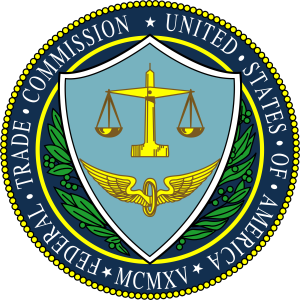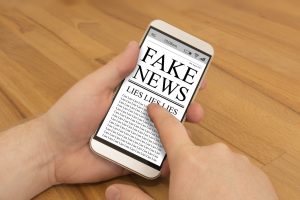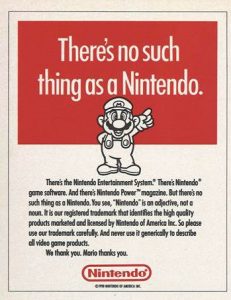 Last week, the FTC brought its first action against a social media influencer for failing to make appropriate disclosures on sponsored posts. While it had previously prosecuted companies who pay influencers for posts such as Lord & Taylor and Warner Brothers, this marks the first time the FTC has pursued an influencer.
Last week, the FTC brought its first action against a social media influencer for failing to make appropriate disclosures on sponsored posts. While it had previously prosecuted companies who pay influencers for posts such as Lord & Taylor and Warner Brothers, this marks the first time the FTC has pursued an influencer.
The Internet Stole My Face: New Advances in Technology Could Make Everyone a Digital Video Puppet
“Believe nothing you hear, and only one half that you see.” Edgar Alan Poe wrote those words over a century ago, yet if he were alive today he may opt for the darker: “Believe nothing you hear and nothing you see.” Over the past decade, advances in graphics technology have provided visual effects artists the ability to create fantastical new worlds on film and to populate those worlds with people, all with an astounding amount of realism. Of particular interest in this post is the ability of this technology to create realistic digital replicas of actors that can be manipulated like puppets to deliver new cinematic performances without the need for any further input from the actor—such as when the late Peter Cushing was digitally recreated in order to reprise the character of Grand Moff Tarkin in Rogue One: A Star Wars Story.
The Doxing Dilemma: A Popular Tactic of Social Activists and Cyber Bullies Alike Remains Mostly Legal
After counter-protests ended in tragedy, a small group of social media users took to Twitter to expose the identities of the white supremacists and neo-Nazis rallying in Charlottesville, Va. Since last Sunday, the @YesYoureRacist account has been calling on Twitter users to identify participants in the rally. Twitter users identified several white supremacists, including Cole White. Users revealed White’s name and place of residence and his employer reportedly fired him from his job at a restaurant in Berkeley, Calif. Several other employers fired employees identified online as attending the rally. In the wake of what will likely be just the latest incident where such behavior will be exhibited and subsequently called out on social media, it’s a good time to look at doxing and the legal environment in which it exists.
Employers of Freelancers Everywhere Should Pay Attention to New York City’s New Law
Freelance writers are as integral to online content generation as migrant workers are to the harvesting of seasonal crops (and in many cases, about as poorly protected). And since content generation is always in season—and given that so many online platforms either use freelancers to generate content or rely in some manner on said content—employers would do well to take note when a large metropolitan area that serves as home for countless freelancers enacts new protections for the group as a whole. New York City did just that with the Freelance Isn’t Free Act, which colleagues Rebecca Carr Rizzo, Kenneth W. Taber and Andrew J. Lauria discussed at length in a May client alert. Now that the law has gone into effect, final rules have been announced which further define what a hiring party can and cannot do in regard to the language of contracts that freelancers are asked to sign. In New York City’s “Freelance Isn’t Free” Act Also Isn’t Waivable, our colleagues explore the law’s final form. While it’s likely New York-area employers are familiar with the law, anyone who hires freelancers based in NYC should take note.
Fake and Consequences: Weathering the Reputational Risks and Financial Fallout of “News” that Abuses
 In today’s political climate, the phrase “fake news” gets bandied about quite a bit. In addition to its more traditional meaning—news that is false, purposefully misrepresented or outright propaganda—fake news is also sometimes used to characterize any news published that the target or subject of disagrees with or dislikes. As the recent election cycle demonstrated, the proliferation of fake news has become an issue with which candidates and businesses alike must contend. But while the extent to which targeted misinformation can swing an election or otherwise affect a political environment is open to debate, for businesses, an ounce of fake can yield pounds of reputational and financial damage. The advent of social media has both catalyzed and weaponized the danger posed by all forms of fake news, and like so many technology-powered issues, the law lags behind in enacting new protections for businesses and individuals alike. Fortunately, some old causes of action may offer remedies for injuries inflicted by fake news stories.
In today’s political climate, the phrase “fake news” gets bandied about quite a bit. In addition to its more traditional meaning—news that is false, purposefully misrepresented or outright propaganda—fake news is also sometimes used to characterize any news published that the target or subject of disagrees with or dislikes. As the recent election cycle demonstrated, the proliferation of fake news has become an issue with which candidates and businesses alike must contend. But while the extent to which targeted misinformation can swing an election or otherwise affect a political environment is open to debate, for businesses, an ounce of fake can yield pounds of reputational and financial damage. The advent of social media has both catalyzed and weaponized the danger posed by all forms of fake news, and like so many technology-powered issues, the law lags behind in enacting new protections for businesses and individuals alike. Fortunately, some old causes of action may offer remedies for injuries inflicted by fake news stories.
But Is It Okay to Google His Name? T-Pain Not Guilty of Genericide
 “Baby it’s okay, you can Google my name.” This line from T-Pain’s hit, “Bottlez,” became a focus in a recent Ninth Circuit trademark case on my favorite intellectual property issue: genericide. Among other evidence, the court considered if T-Pain’s use of “Google” showed that the Google trademark had become genericide’s latest victim. Genericide occurs when the public appropriates a trademark and begins using it generically for a type of goods or services, as opposed to a source of goods or services.
“Baby it’s okay, you can Google my name.” This line from T-Pain’s hit, “Bottlez,” became a focus in a recent Ninth Circuit trademark case on my favorite intellectual property issue: genericide. Among other evidence, the court considered if T-Pain’s use of “Google” showed that the Google trademark had become genericide’s latest victim. Genericide occurs when the public appropriates a trademark and begins using it generically for a type of goods or services, as opposed to a source of goods or services.
I, TweetBot: Are Fake Users Social Media’s Dirty Little Secret?
 President Donald Trump loves to tweet. Although he has been a prolific tweeter since his days as a reality TV star, during his presidential campaign and subsequent time in office, President Trump has taken the “Art of the Tweet” to new heights. The media, in return, has done its part in slicing, dicing, mincing, chopping, deconstructing, and otherwise analyzing President Trump’s Twitter use six ways to Sunday. (Covfefe, anyone?)
President Donald Trump loves to tweet. Although he has been a prolific tweeter since his days as a reality TV star, during his presidential campaign and subsequent time in office, President Trump has taken the “Art of the Tweet” to new heights. The media, in return, has done its part in slicing, dicing, mincing, chopping, deconstructing, and otherwise analyzing President Trump’s Twitter use six ways to Sunday. (Covfefe, anyone?)
Recently, though, it’s not just the content of President Trump’s tweets that has garnered attention. It’s also his audience.
Executive Order 13800 – Strengthening the Cybersecurity of Federal Networks and Critical Infrastructure
 President Donald J. Trump signed Executive Order 13800 titled “Strengthening the Cybersecurity of Federal Networks and Critical Infrastructure” on May 11, 2017, his thirty-fifth executive order since taking office.
President Donald J. Trump signed Executive Order 13800 titled “Strengthening the Cybersecurity of Federal Networks and Critical Infrastructure” on May 11, 2017, his thirty-fifth executive order since taking office.
An 8-0 Decision by the U.S. Supreme Court in TC Heartland v. Kraft Foods Limits Venue Shopping in Patent Suits
Today, May 22, 2017, in the TC Heartland v. Kraft Foods opinion written by Justice Clarence Thomas, the U.S. Supreme Court held that the proper venue for a patent infringement lawsuit is (1) the state of incorporation for the defendant, or (2) a district where the defendant has committed acts of infringement and has a regular and established place of business. The Court held that for purposes of the patent venue statute, 28 U.S.C. §1400(b), a domestic corporation “resides” only in its State of incorporation, rejecting the argument that §1400(b) incorporates the broader definition of corporate “residence” contained in the general venue statute, 28 U.S.C. §1391(c).
Banging the Disclosure Drum: The Once Blurry Line between Advertiser and Influencer Continues to Come into Focus
 As we have written about time and time again, and as celebrities and influencers gain more and more followers on social media platforms such as Instagram, Snapchat and Twitter, they must exercise care when endorsing the use of sponsored products and services. Under the current legal landscape, posting endorsements on social media can not only affect the user’s brand, it can also expose one to legal liability. For its part, the Federal Trade Commission provides clear regulations regarding the posting of endorsements for products or services. When a product or service is featured on a social media post, and the poster is receiving some sort of compensation for the post (including receiving the product/service at a discount or for free), a poster may have to disclose that he or she is somehow being compensated, if the audience’s knowledge of the sponsorship would affect the credibility they give the poster’s endorsement. The FTC’s website contains common Q&As regarding when an endorsement must be disclosed on social media and how it must be done. Continue Reading →
As we have written about time and time again, and as celebrities and influencers gain more and more followers on social media platforms such as Instagram, Snapchat and Twitter, they must exercise care when endorsing the use of sponsored products and services. Under the current legal landscape, posting endorsements on social media can not only affect the user’s brand, it can also expose one to legal liability. For its part, the Federal Trade Commission provides clear regulations regarding the posting of endorsements for products or services. When a product or service is featured on a social media post, and the poster is receiving some sort of compensation for the post (including receiving the product/service at a discount or for free), a poster may have to disclose that he or she is somehow being compensated, if the audience’s knowledge of the sponsorship would affect the credibility they give the poster’s endorsement. The FTC’s website contains common Q&As regarding when an endorsement must be disclosed on social media and how it must be done. Continue Reading →
 Internet & Social Media Law Blog
Internet & Social Media Law Blog



